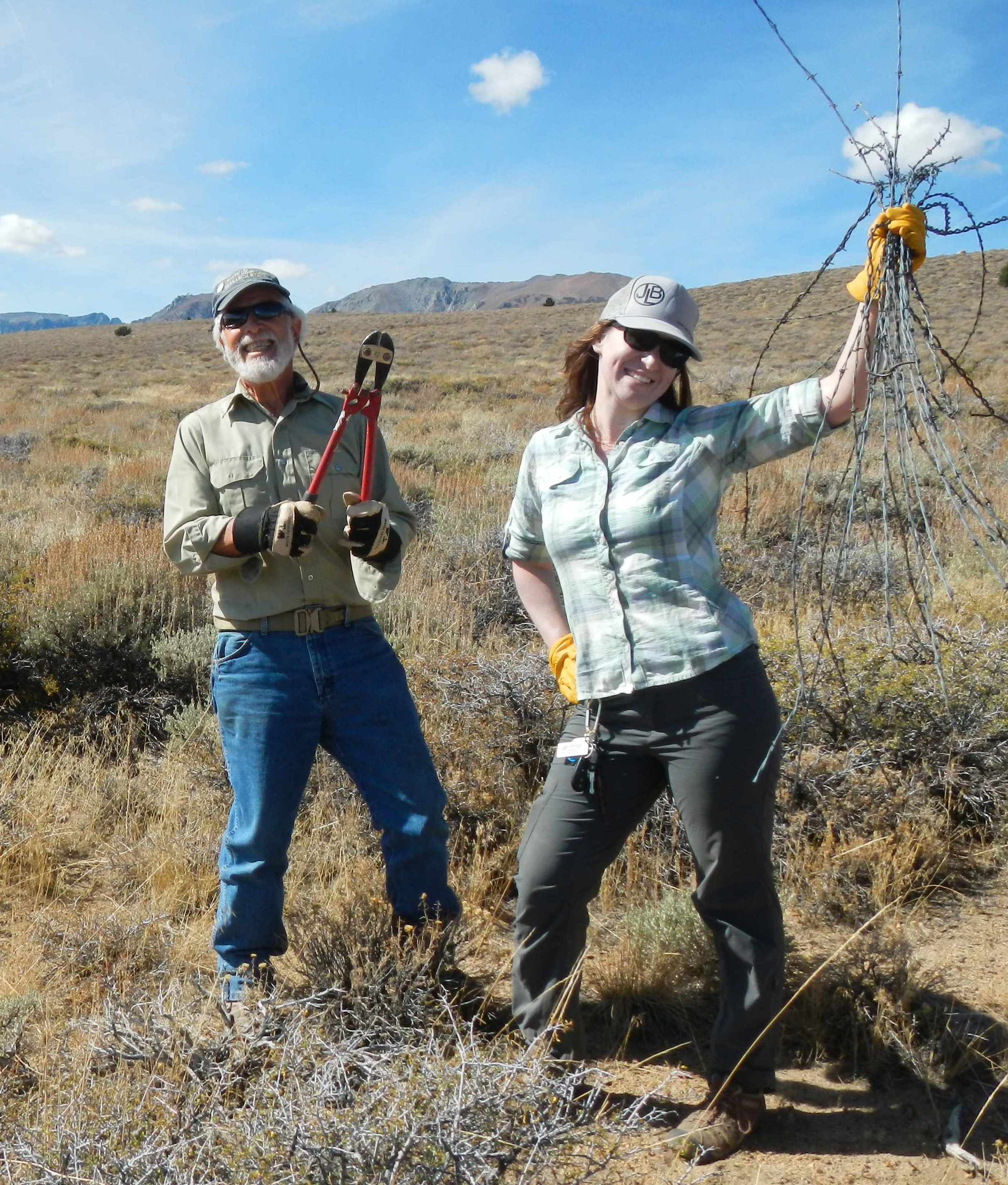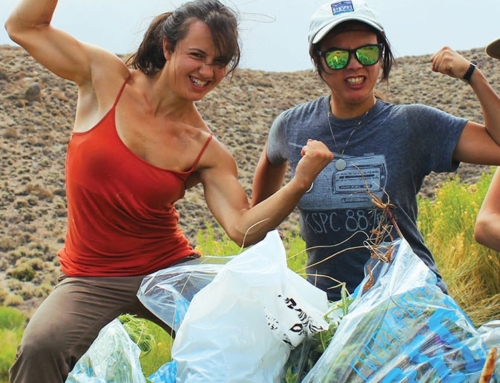This post was contributedby longtime ESLT Stewardship Volunteer and member, Wally Woolfenden.

At ESLT’s Sage-Grouse Stewardship Day in October 2015, Stewardship Volunteer Wally Woolfenden (left) brought hard work and plenty of smiles as he helped make Sinnamon Meadows a safer home for sage-grouse.
The protection of natural, non-human dominated ecosystems has been an important effort, especially the preservation of wilderness. Wilderness, however, is usually of marginal interest for settlement and commercial land use, offeringprimarily aesthetic and recreational benefits.Rural lands outside of the mountains, natural grasslands, and other protected areas have been heavily altered by decades of land use – yet they often contain important remnants of habitats that contribute to biodiversity.
I have chosen to volunteer withESLT’s stewardshipprojectsbecause the objective of this workis to rehabilitate ecosystems damaged from overuse and inappropriate use, and to realign their natural functions.
Of all the ESLT projects I have volunteered on, one of my favorites wastherestoration of Greater sage-grouse habitat atSinnamon Meadows. I love the heavy work of pulling, cutting, and rolling fencing to remove barriers to sage-grouse roaming, especially in the gorgeous landscape of the ranch. I appreciate the comprehensive restoration work that involved not only the removal of fencing but the attachment of fence markers to provide visual warning to the grouse, and placement of raven perch deterrents on poles. A bonus isworking with a very delightful group of volunteers.
-
Wally (left) and other ESLT volunteers went to work last fall at Sinnamon Meadows to remove old fence wire and create safer habitat for sage-grouse.
-
Wally (center) joins fellow volunteers at ESLT’s frequent Highway Cleanups along Scenic Highway 395.
-
Wally (right), pulling weeds in Swall Meadows to maintain healthy native plant populations and enhance wildlife habitat.











[…] “I love the heavy work of pulling, cutting, and rolling up fences to remove barriers to sage-grouse roaming, especially on such a gorgeous landscape… And a bonus is working with a very delightful group of volunteers.” – Wally Woolfenden (right), Stewardship Volunteer. Read about Wally’s experience as an ESLT volunteer here! […]